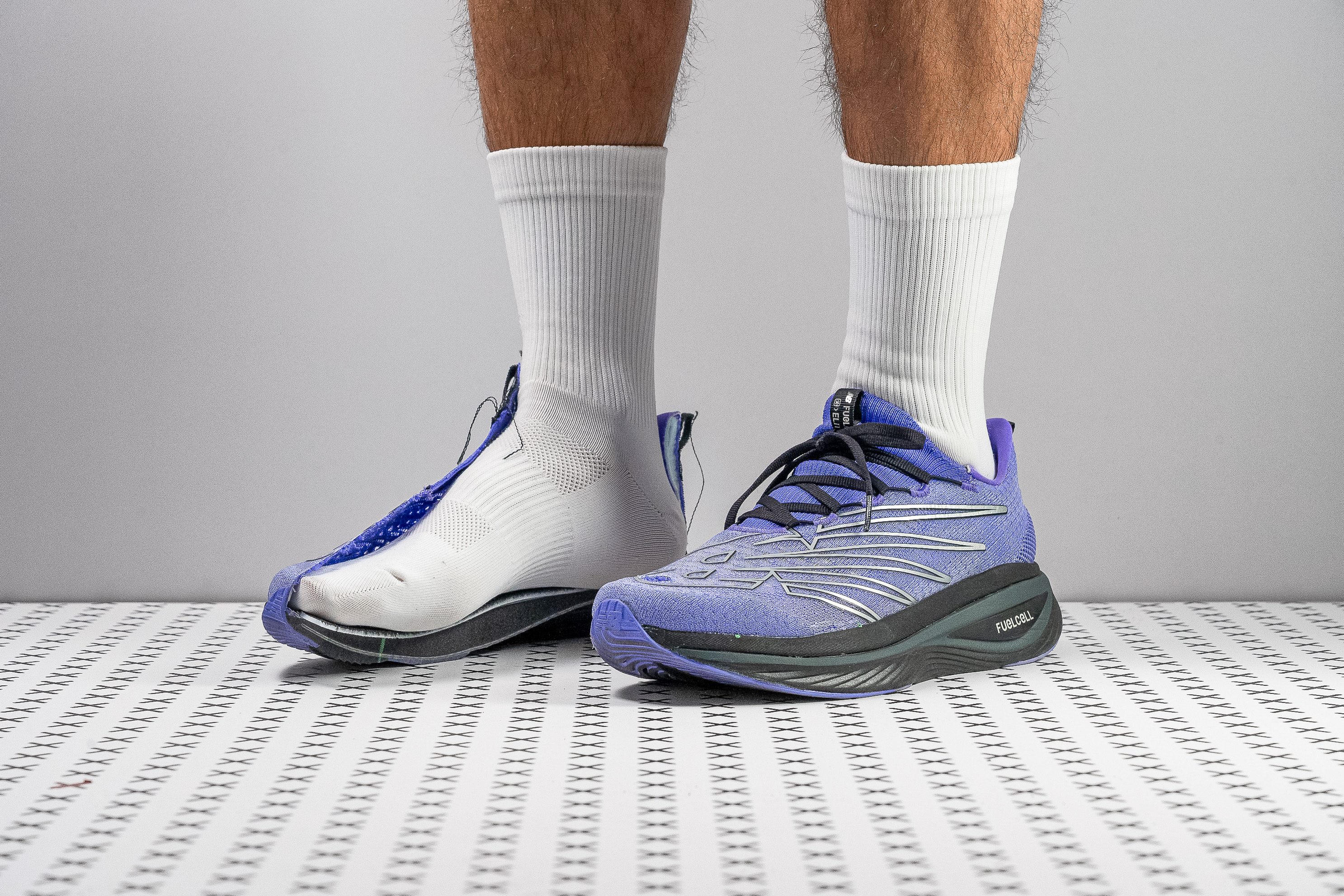Our verdict
- Top pick in best triathlon running shoes (2023)
Pros
- Plush, comfortable midsole
- Snug-fitting yet comfortable upper
- Smooth, rockered ride
- Versatile for all paces
- Durable and grippy outsole
- Reliable lockdown
- Amazing for long runs
Cons
- Limited energy return
- Not the best for racing
- Lacing system could be better
Audience verdict
- Top 17% most popular running shoes
Comparison
The most similar running shoes compared
+ + Add a shoe | |||||
|---|---|---|---|---|---|
| Audience score | 87 Great! | 92 Superb! | 85 Good! | 89 Great! | |
| Price | £220 | £260 | £230 | £150 | |
| Pace | CompetitionTempo | Competition | Tempo | Tempo | |
| Shock absorption | - | High | High | High | |
| Energy return | - | High | High | Moderate | |
| Traction | - | High | High | High | |
| Arch support | Neutral | Neutral | Neutral | Neutral | |
| Weight lab Weight brand | 7.7 oz / 217g 7.6 oz / 215g | 7 oz / 198g 7.5 oz / 213g | 9.8 oz / 278g 9.8 oz / 278g | 9.5 oz / 268g 9.5 oz / 269g | |
| Lightweight | ✓ | ✓ | ✗ | ✗ | |
| Drop lab Drop brand | 14.2 mm 4.0 mm | 10.7 mm 8.0 mm | 7.3 mm 6.0 mm | 10.1 mm 10.0 mm | |
| Strike pattern | Heel | Heel | Mid/forefoot | Heel | |
| Size | Slightly small | True to size | True to size | Slightly small | |
| Midsole softness | Soft | Soft | Soft | Soft | |
| Difference in midsole softness in cold | Small | Small | Normal | Normal | |
| Toebox durability | Bad | Bad | Bad | Decent | |
| Heel padding durability | Good | Decent | Good | Decent | |
| Outsole durability | Good | Decent | Decent | Decent | |
| Breathability | Breathable | Moderate | Moderate | Moderate | |
| Width / fit | Narrow | Medium | Medium | Narrow | |
| Toebox width | Medium | Medium | Medium | Narrow | |
| Stiffness | Stiff | Moderate | Stiff | Stiff | |
| Torsional rigidity | Stiff | Stiff | Stiff | Stiff | |
| Heel counter stiffness | Moderate | Flexible | Moderate | Flexible | |
| Plate | Carbon plate | Carbon plate | Carbon plate | Carbon plate | |
| Rocker | ✓ | ✓ | ✓ | ✗ | |
| Heel lab Heel brand | 36.4 mm 40.0 mm | 39.3 mm 40.0 mm | 36.8 mm 41.0 mm | 37.4 mm 39.0 mm | |
| Forefoot lab Forefoot brand | 22.2 mm 36.0 mm | 28.6 mm 32.0 mm | 29.5 mm 35.0 mm | 27.3 mm 29.0 mm | |
| Widths available | NarrowNormal | NormalWide | NormalWide | NormalWide | |
| Orthotic friendly | ✓ | ✓ | ✓ | ✓ | |
| Season | SummerAll seasons | All seasons | All seasons | All seasons | |
| Removable insole | ✓ | ✓ | ✓ | ✓ | |
| Ranking | #342 Bottom 48% | #11 Top 3% | #208 Bottom 44% | #116 Top 31% | |
| Popularity | #111 Top 17% | #35 Top 10% | #41 Top 11% | #55 Top 15% |
Who should buy
We've concluded that the FuelCell SuperComp Elite v3 is a prime choice for:
- Runners seeking a plush racing shoe with a less stiff ride when compared to other supershoes.
- Those aiming for a high-quality running shoe perfect for long runs at fast paces, given its exceptional performance in such conditions.
- Marathoners looking for a versatile shoe that does a great job at races and also serves well for interval sessions.
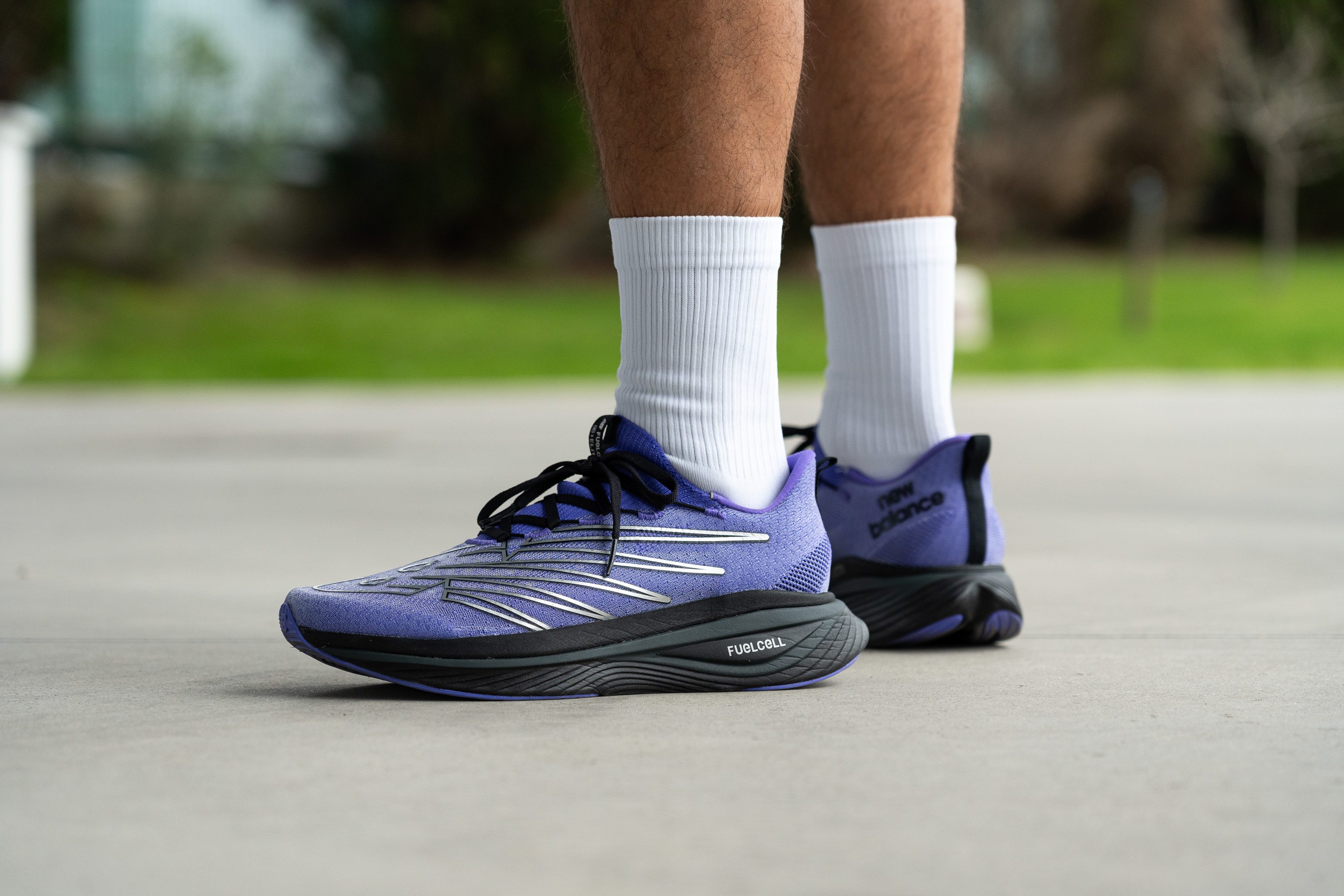
Who should NOT buy
Despite the inclusion of a full-length carbon plate, the FuelCell foam in the SC Elite v3 falls short on energy return—costing runners valuable seconds in any race, regardless of distance. For those who prioritise pure performance, we believe there are better options available, such as the Nike Vaporfly 3 or the Hoka Rocket X 2.
Moreover, while the SC Elite v3 performs admirably in training, we think its high price tag doesn't quite justify its versatility. When comparing it to supertrainers like the ASICS Superblast or the Saucony Endorphin Speed 4, which feature highly resilient foams in a comparable weight, we do not recommend the SC Elite v3 as the best value for your investment.
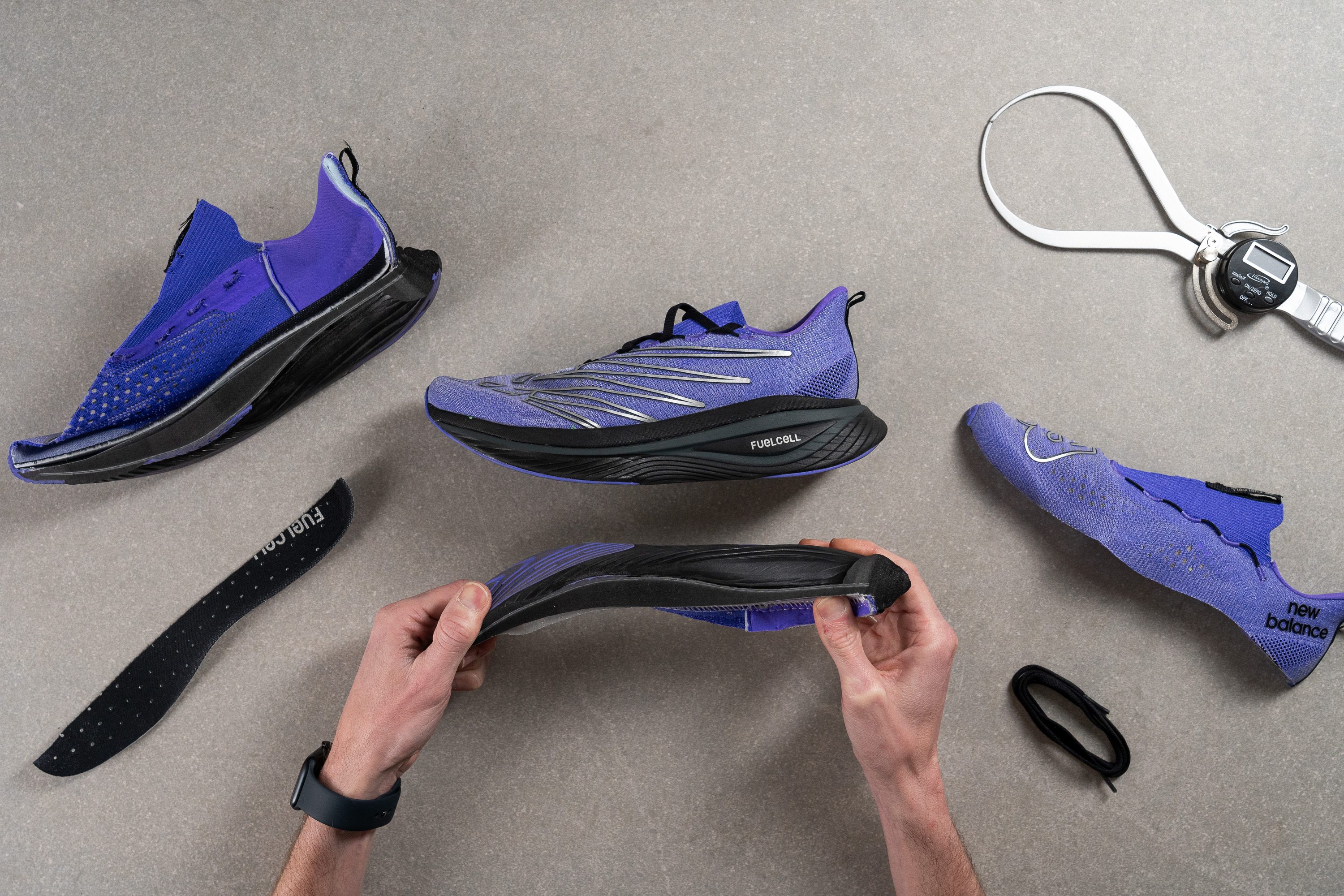
Cushioning
Heel stack
We measured the heel at 36.4 mm—while not pushing the World Athletics' 40-mm stack height limit for race-day shoes, it still offers a remarkably cushioned experience.
Given the amount of FuelCell padding, we're confident it's quite uncommon for any heel striker to bottom out the Elite v3.
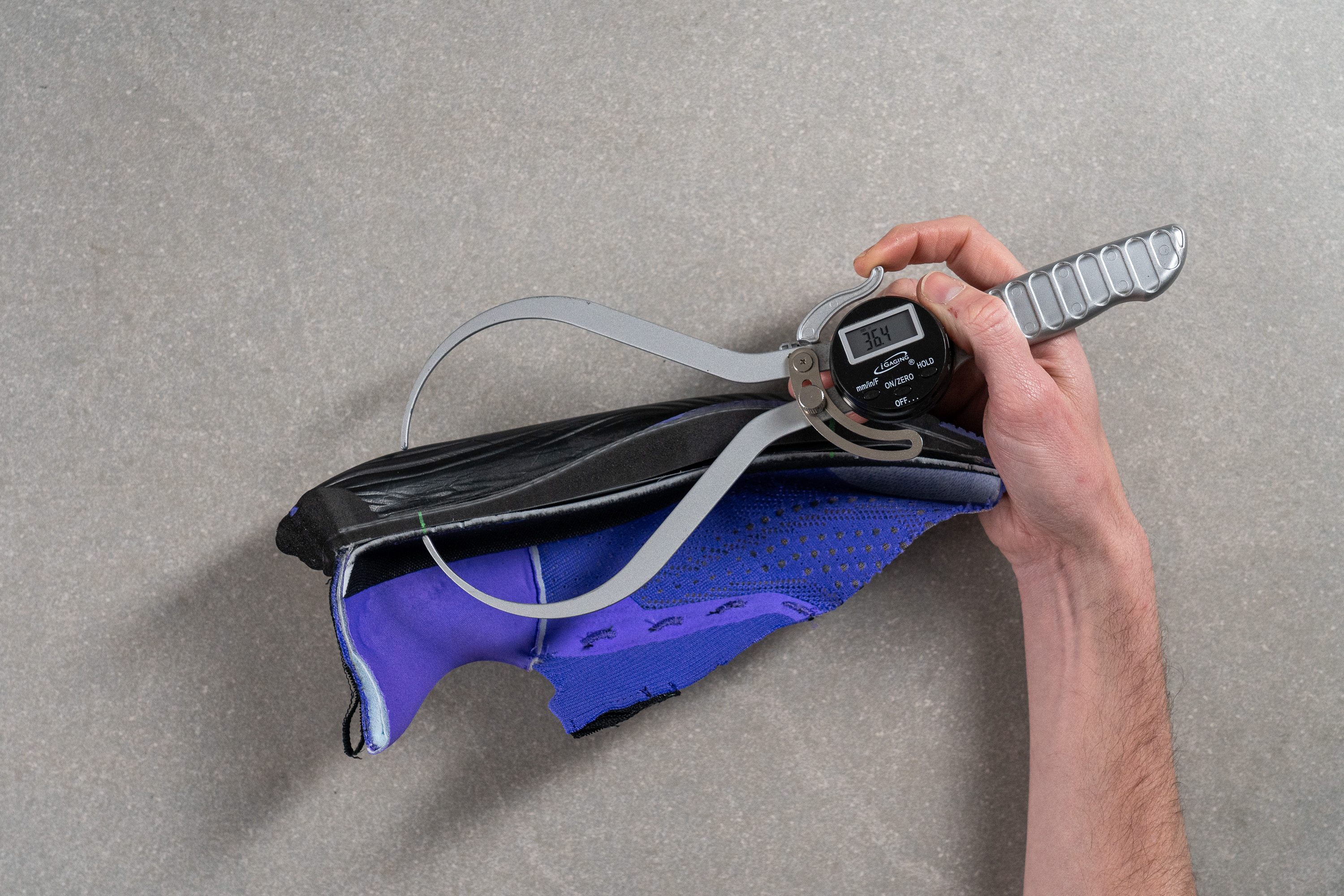
| FuelCell SuperComp Elite v3 | 36.4 mm |
| Average | 34.8 mm |
Forefoot stack
Yet, the forefoot presents a stark contrast, much thinner than anticipated. Our measurements show it's only 22.2 mm, a thinness attributable to the forefoot's geometry and the placement of the midsole cutout.
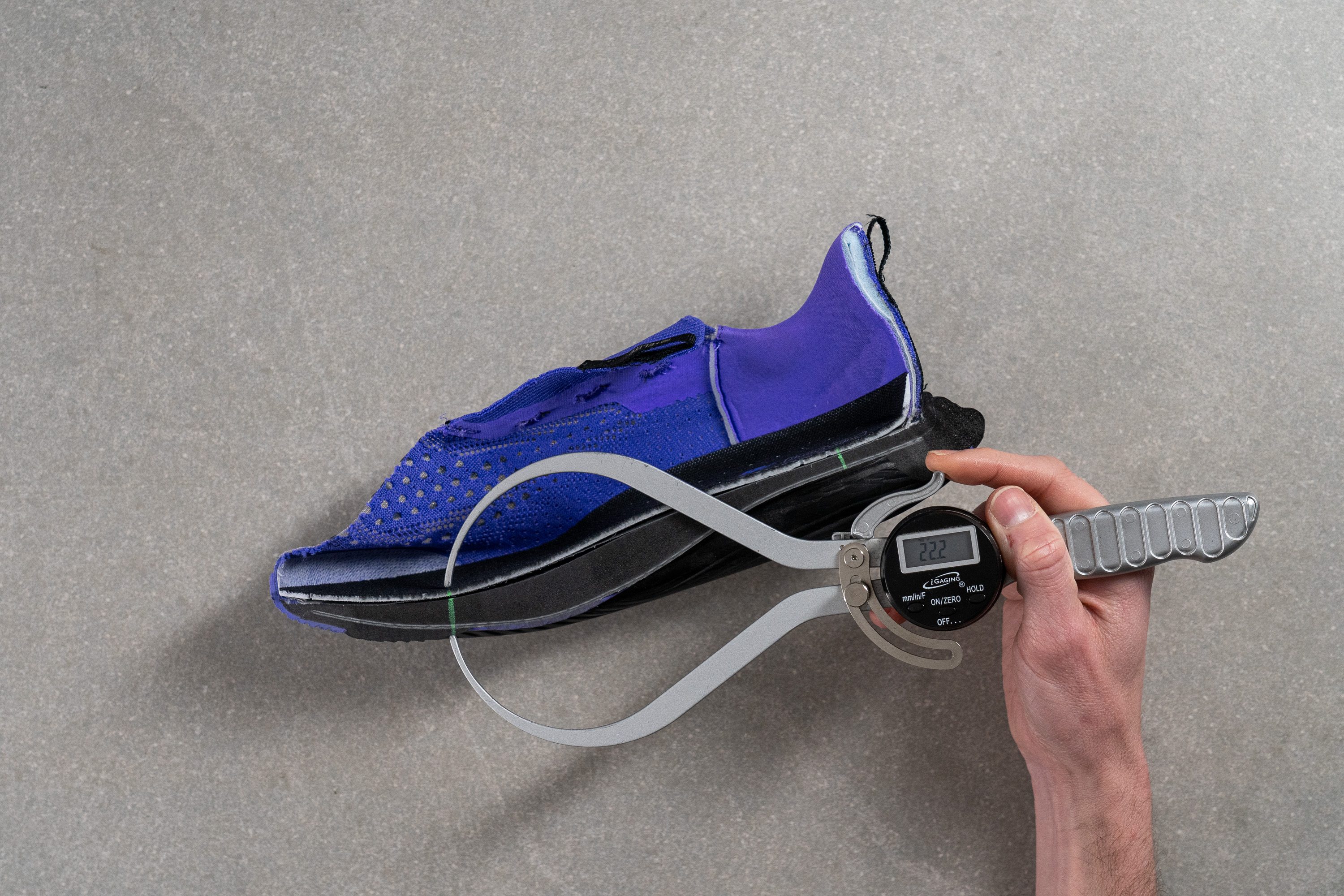
| FuelCell SuperComp Elite v3 | 22.2 mm |
| Average | 26.2 mm |
Drop
Adhering to World Athletics' official procedures, our two measurements revealed a substantial 14.2-mm heel-to-toe drop, significantly diverging from the brand's claimed 4 mm.
As discussed in this article, such discrepancies are common in the industry. It's worth noting that, in our field tests, the shoe felt more like it has an 8-mm drop during runs, largely due to its unique geometry, rather than aligning with 4 mm or 14.2 mm.
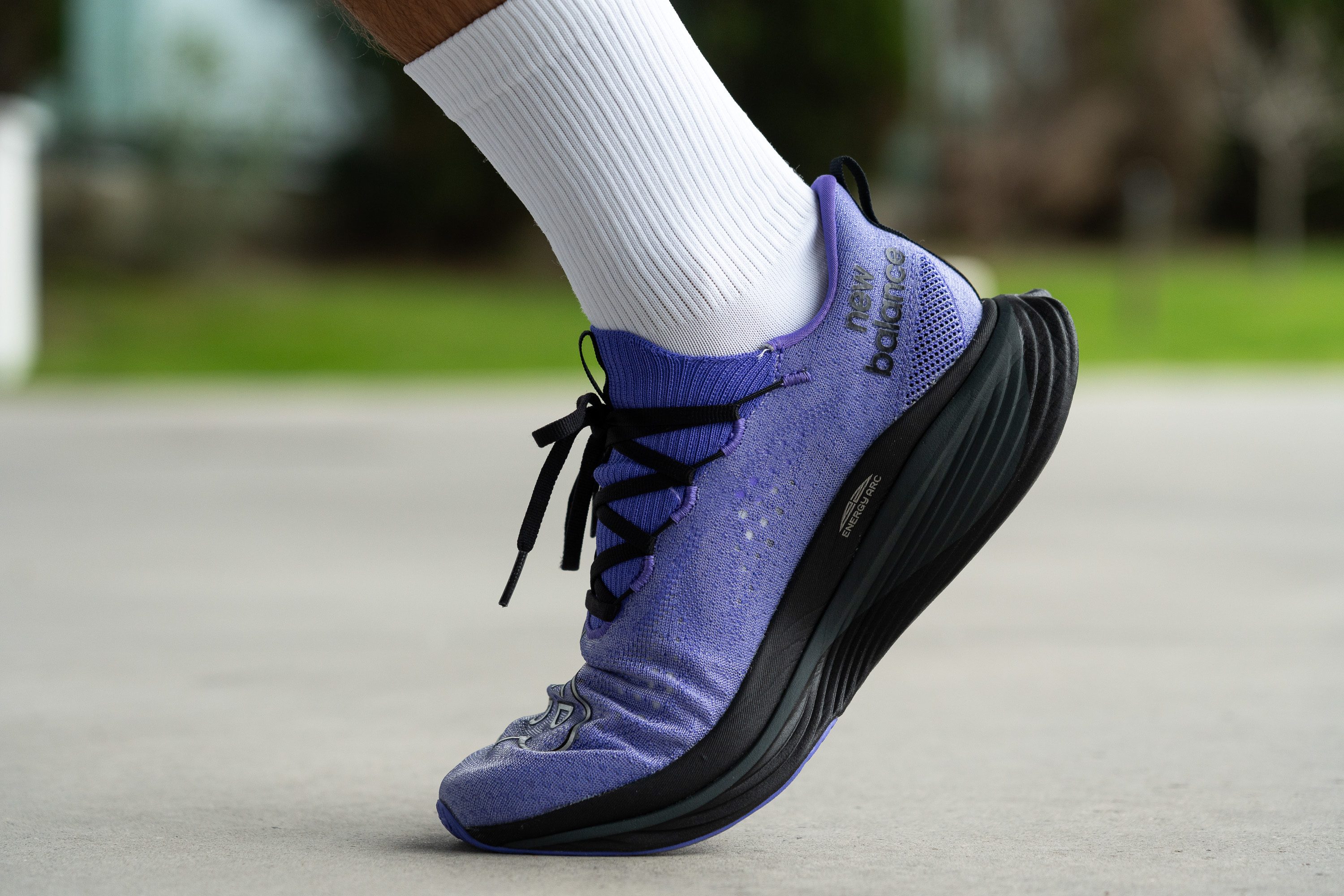
| FuelCell SuperComp Elite v3 | 14.2 mm |
| Average | 8.6 mm |
Midsole softness
Touching on a sore point, the foam New Balance employs in the SC Elite v3 is the old FuelCell, which is, without a doubt, this shoe's Achilles' heel. Honestly, we struggle to label the SC Elite v3 as a true supershoe since, in our estimation, a genuine contender in this category should combine a high-energy-return foam with a carbon plate.
While the SC Elite v3 does incorporate the Energy Arc carbon plate, it falls short on the superfoam front. The FuelCell in this model delivers merely average energy return, on par with everyday trainers like the Rebel v3, and lags significantly behind rivals boasting Pebax midsoles.
Is this shortfall a deal-breaker? For those prioritising performance, it certainly is, and you should definitely take a look at the pricier Elite v4. However, for runners seeking a cushy and plush ride, this shoe excels, as evidenced by its softness, which we measured at just 15.1 HA.
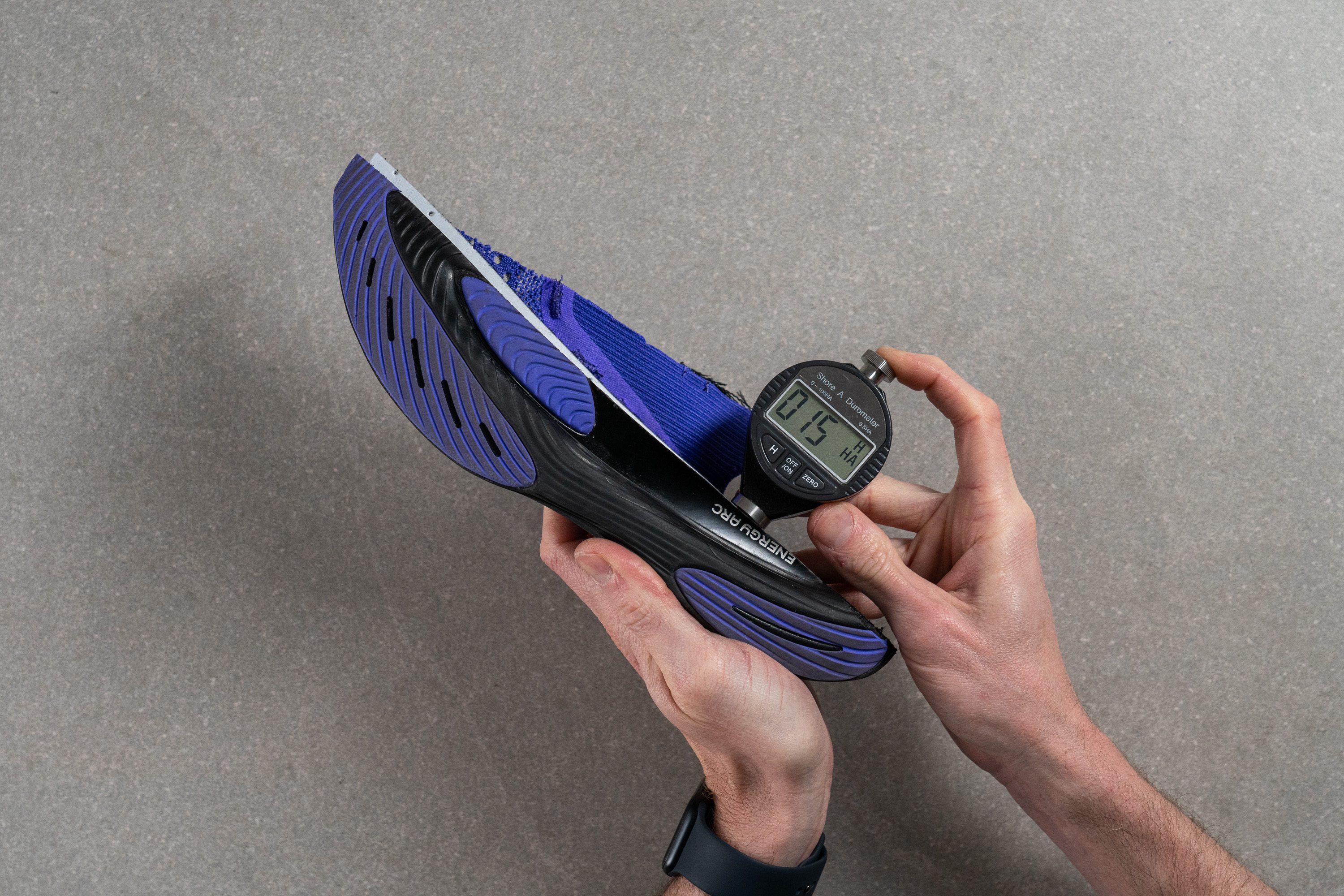
| FuelCell SuperComp Elite v3 | 15.1 HA |
| Average | 20.4 HA |
Rocker
Defined by its curved geometry reminiscent of a rocking chair, the SuperComp Elite v3 embodies the essence of a rockered running shoe perfectly. In our lab tests, we've encountered only a handful of shoes that offer such a seamless, rockered experience!
Plate
Our testing revealed that the SC Elite v3 is equipped with a curved carbon plate, enhancing the shoe's rigidity and delivering the dynamic, propulsive sensation sought after in a race-day shoe.
This plate is a fresh introduction in the series, featuring the innovative Energy Arc technology with a cambered shape to boost efficiency.
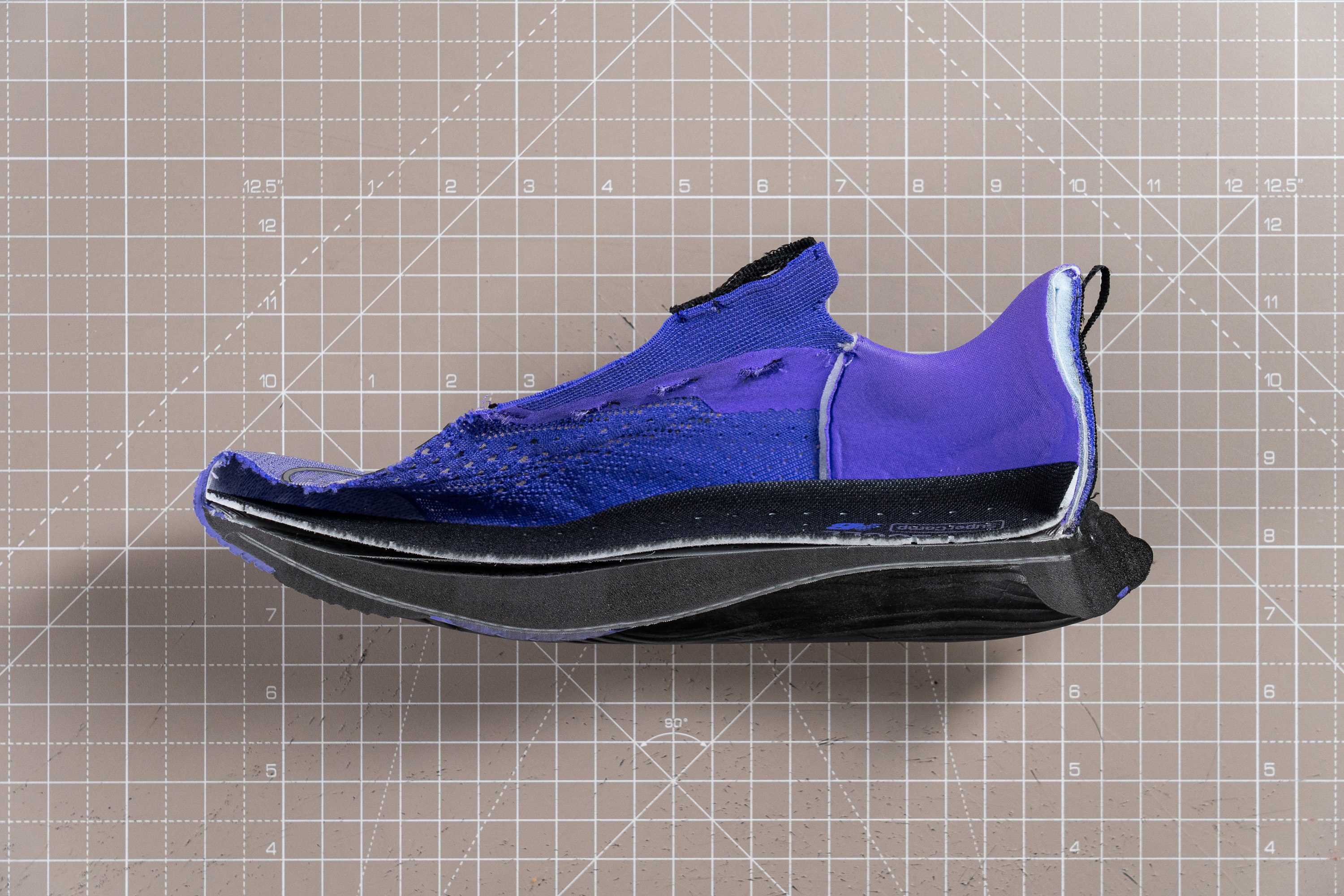
Size and fit
Size
New Balance FuelCell SuperComp Elite v3 fits slightly small (29 votes).
Width / Fit
Next, we focused on the toebox, eager to quantify its dimensions.
Despite the shoe's snug fit, it remains surprisingly comfortable. This was validated when we measured a mere 95.3 mm at the upper's widest point.
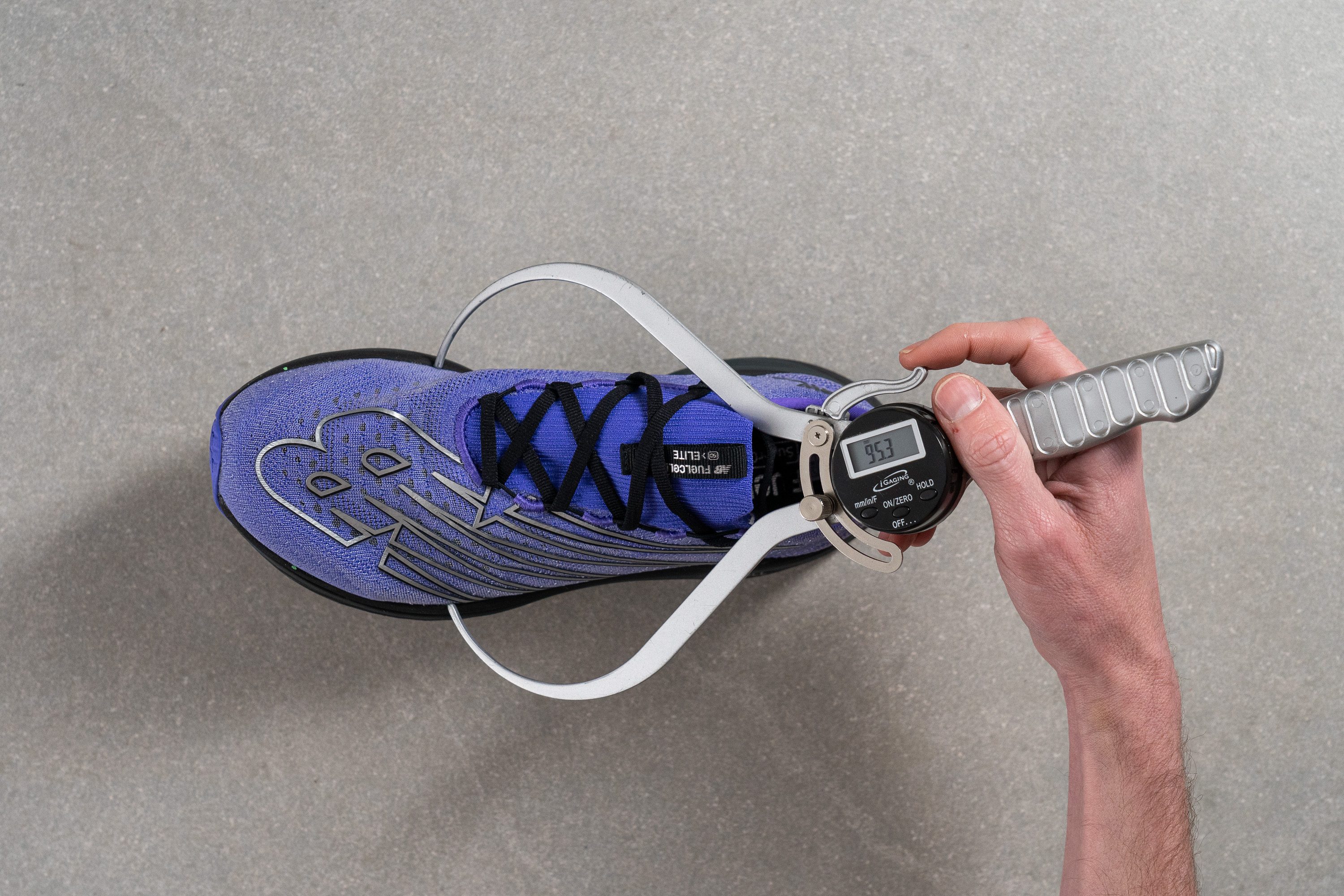
This test follows an older methodology, which is why you don't see recently tested shoes in the chart. Results from different methodologies can not be compared.
| FuelCell SuperComp Elite v3 | 95.3 mm |
| Average | 98.5 mm |
Toebox width
The toebox features a non-aggressive taper, offering more space in the toe area.
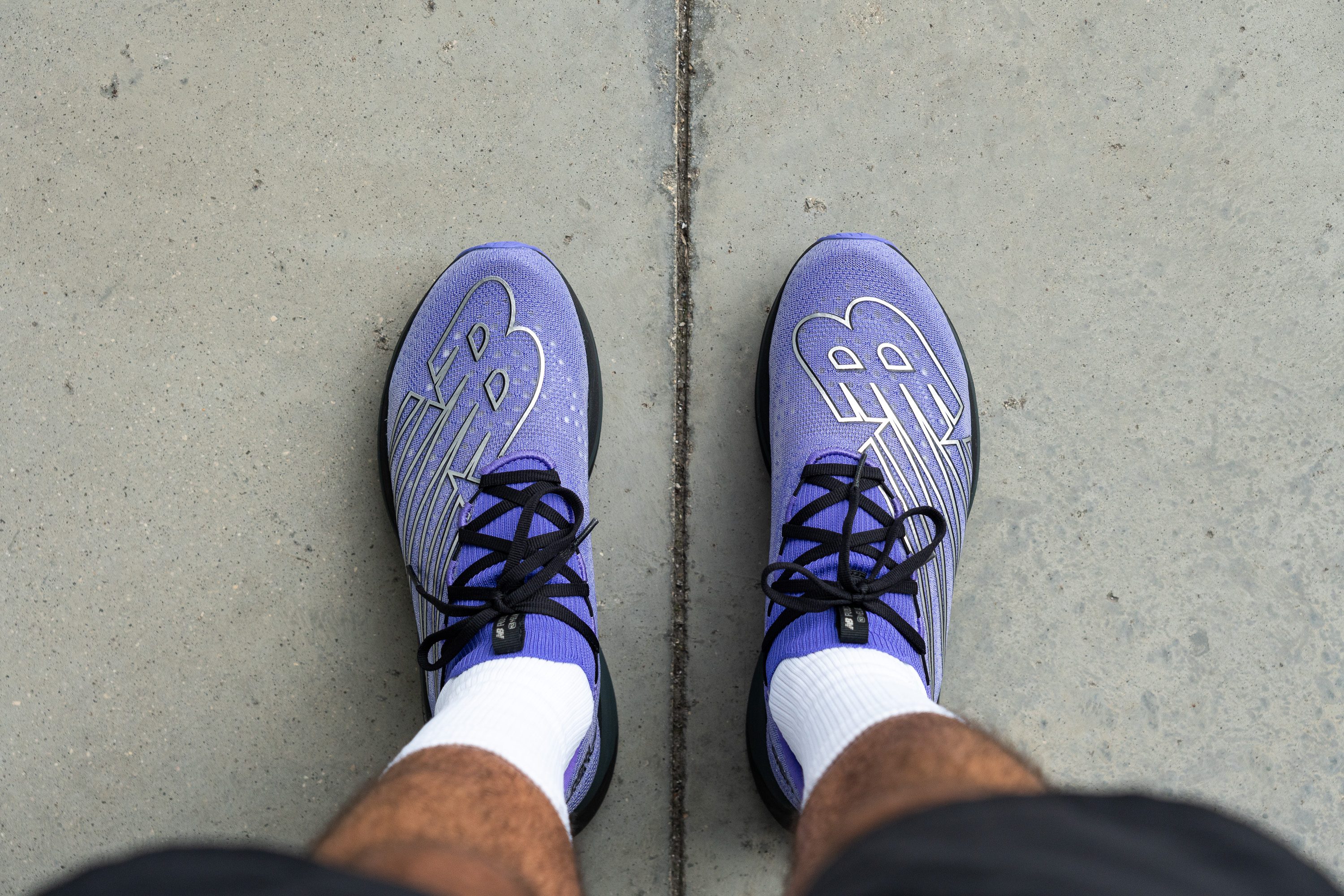
This spaciousness makes the shoe an excellent choice for long runs of 20 miles or even more.
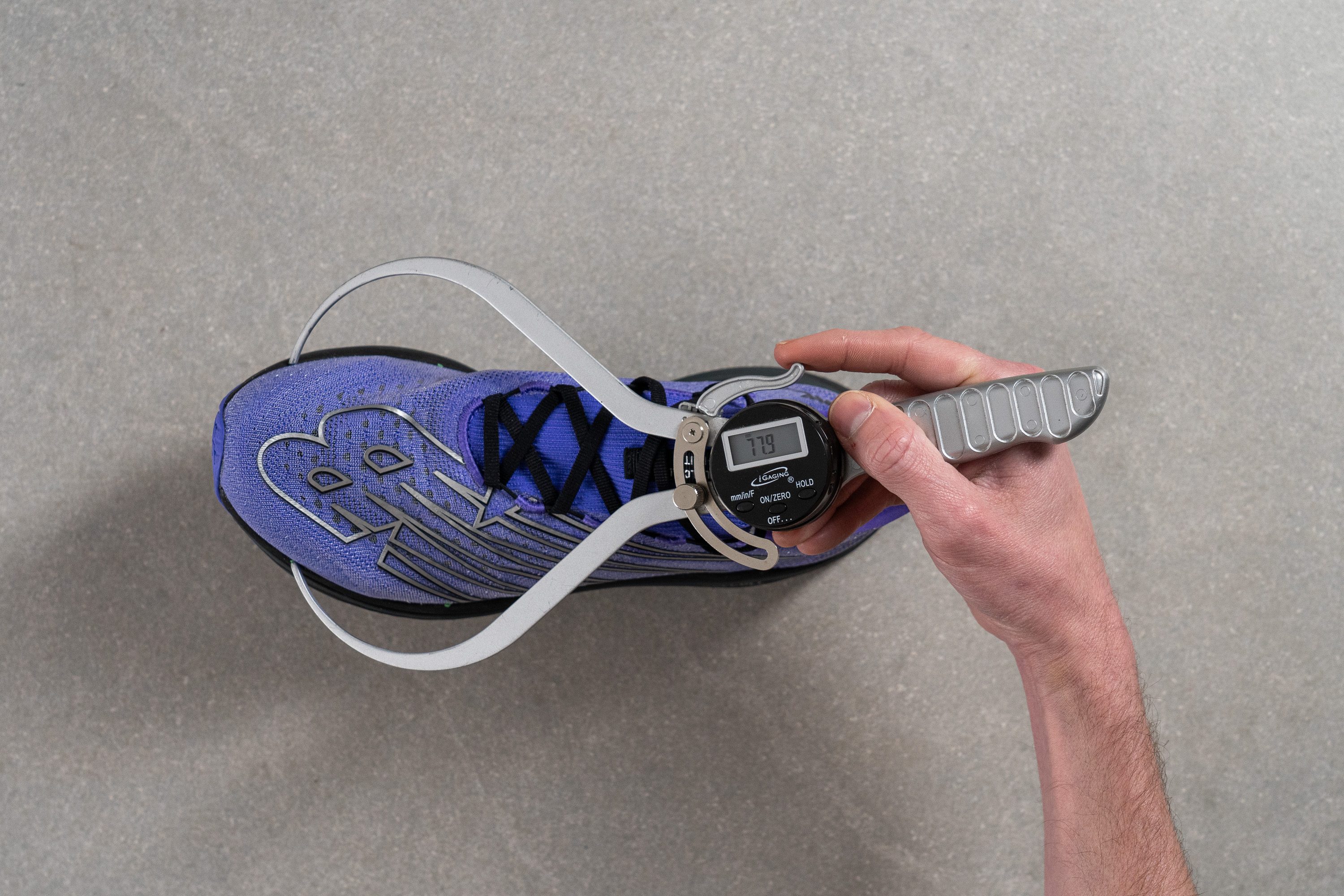
This test follows an older methodology, which is why you don't see recently tested shoes in the chart. Results from different methodologies can not be compared.
| FuelCell SuperComp Elite v3 | 77.9 mm |
| Average | 78.4 mm |
Flexibility / Stiffness
In our bend test, where we gauge the force required to flex each shoe to a 90-degree angle, the Elite v3 required a mere 38.3N, significantly less than other carbon-plated counterparts.
This reinforces our impression of the Elite v3 as a more laid-back racing shoe, better suited for brisk long runs or tempo workouts rather than competitive racing.
This test follows an older methodology, which is why you don't see recently tested shoes in the chart. Results from different methodologies can not be compared.
| FuelCell SuperComp Elite v3 | 38.3N |
| Average | 28.1N |
Stiffness in cold (%)
Our subsequent test after putting the Elite v3 for 20 minutes in the freezer showed a stiffness increase of just 9.9%, a change that's hardly worrisome and likely imperceptible to runners.
| FuelCell SuperComp Elite v3 | 10% |
| Average | 33% |
Weight
The New Balance FuelCell SuperComp Elite v3, despite its lengthy name, maintains a decent weight. Tipping the scales at 7.7 oz or 217g, it's a bit heftier compared to other supershoes, but nothing concerning at all.
In our experience, the real conversation about this shoe isn't its weight but rather its midsole—so let's dive into that!
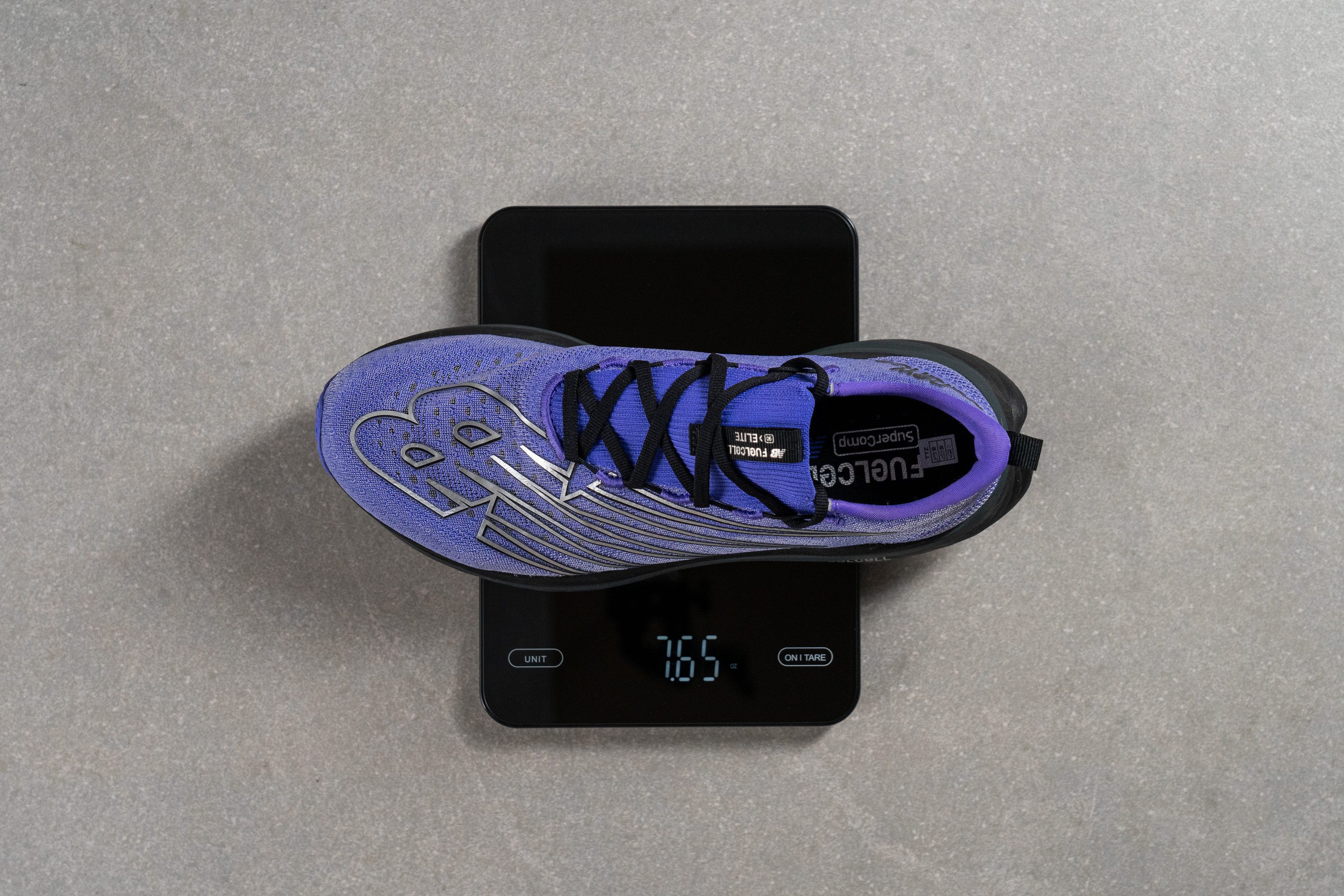
| FuelCell SuperComp Elite v3 | 7.7 oz (217g) |
| Average | 9.3 oz (264g) |
Breathability
Upon unboxing the Elite v3, its breathability didn't seem promising, sparking some initial concerns in the lab. However, instead of dwelling on what might happen, we chose to jump straight into our testing to discover the real story, beginning with the smoke test.
To our relief, our concerns quickly dissipated. The knit upper proved to be incredibly breathable, not just in the toebox but throughout the entire shoe—a major advantage for those prone to blisters in the arch during long-distance events.
The light test, despite its simplicity, is an excellent tool for identifying the most breathable areas of a shoe. Through this, we discovered that New Balance smartly focused on airflow in the toebox while still ensuring adequate ventilation and structure throughout the rest of the upper.
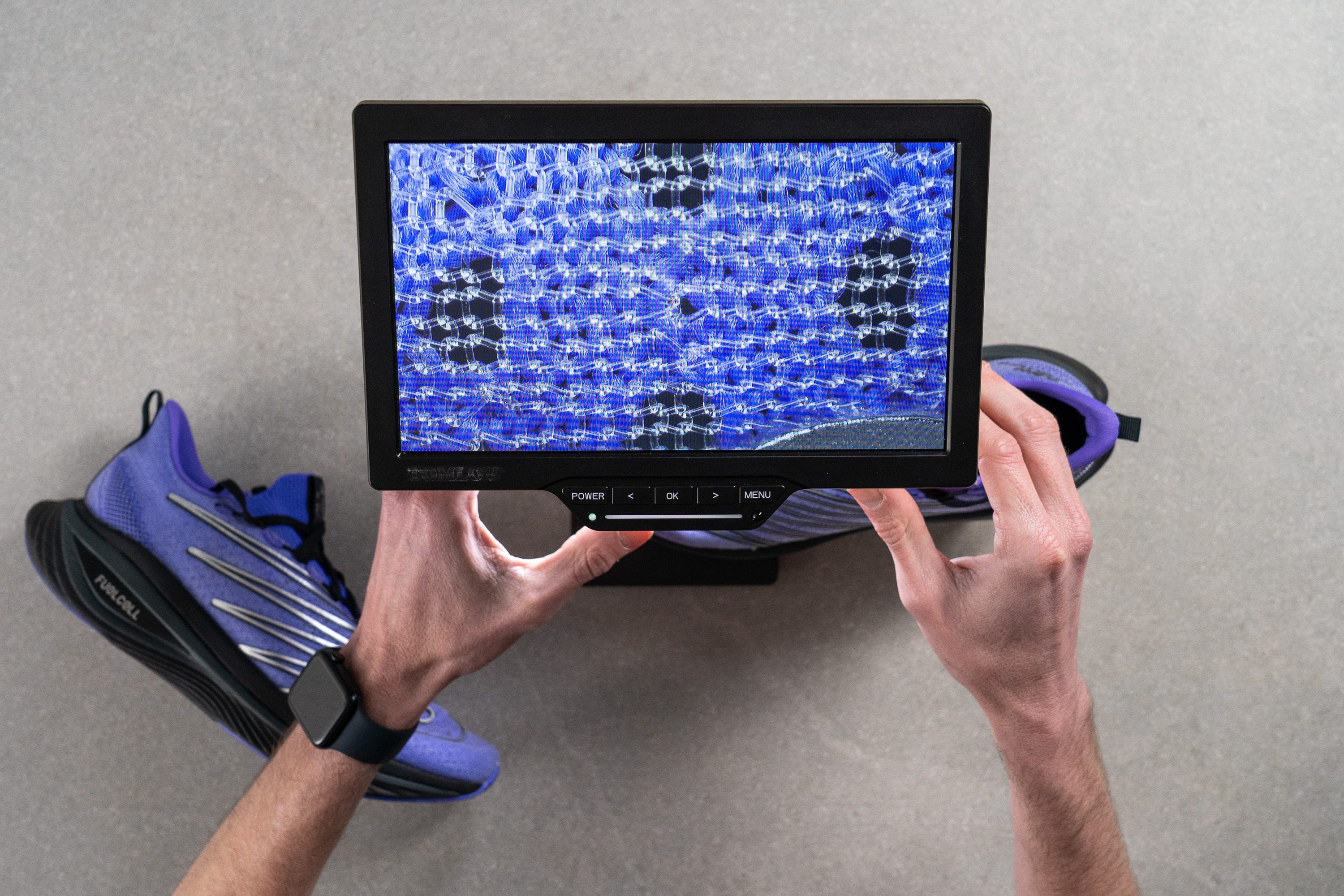
Examining the shoe under a microscope, we identified micro-ventilation holes that promote optimal airflow.
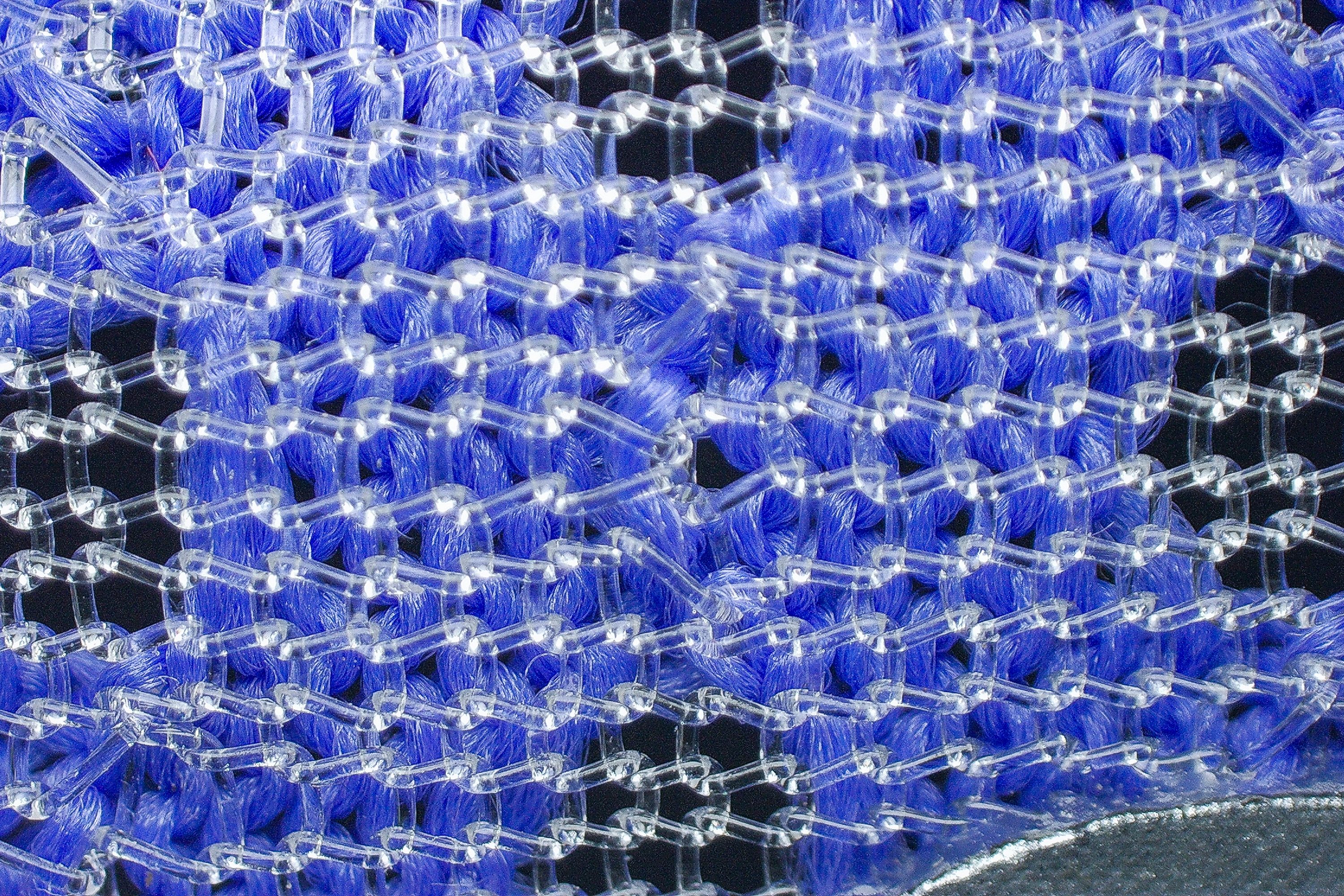
We also realised that the upper is crafted from engineered mesh, yet it's remarkably stretchy, among the most flexible we've tested.
After thoroughly assessing the upper, we concluded that it's quite unique, blending mesh (body) and knit (tongue) in one single shoe.
| FuelCell SuperComp Elite v3 | 5 |
| Average | 3.7 |
Stability
Lateral stability test
Combining a substantial amount of foam with extreme softness naturally compromises stability, and that's exactly the experience the Elite v3 provides.
This also makes the shoe incredibly enjoyable for all runs, yet it's strictly suitable for neutral runners—definitely a no-no for those needing extra stability.
Torsional rigidity
The SC Elite v3's incorporation of the Energy Arc carbon plate suggests a high level of torsional rigidity, though it falls short compared to other racing shoes.
We awarded it a 4/5. This feature significantly contributes to the shoe's more relaxed feel compared to its racing peers, offering a bit more ease during runs.
| FuelCell SuperComp Elite v3 | 4 |
| Average | 3.5 |
Heel counter stiffness
The heel of this speedster is surprisingly structured, earning a 3/5 on our stiffness scale. This level of rigidity might not suit marathoners with Achilles problems, particularly those battling Haglund's deformity.
One might wonder why New Balance chose a firmer heel for a racing shoe. It appears they aimed to offset the ultra-soft midsole with features like elevated midsole sidewalls and a moderately stiff heel counter...
| FuelCell SuperComp Elite v3 | 3 |
| Average | 2.9 |
Midsole width - forefoot
This was a missed chance to enhance the shoe's stability, with the forefoot width measuring just 112.6 mm.
Yet, this design choice seems to stem from a desire to keep the weight in check. Despite featuring a hollow central channel, the shoe still tips the scales as one of the heavier options in the racing category.
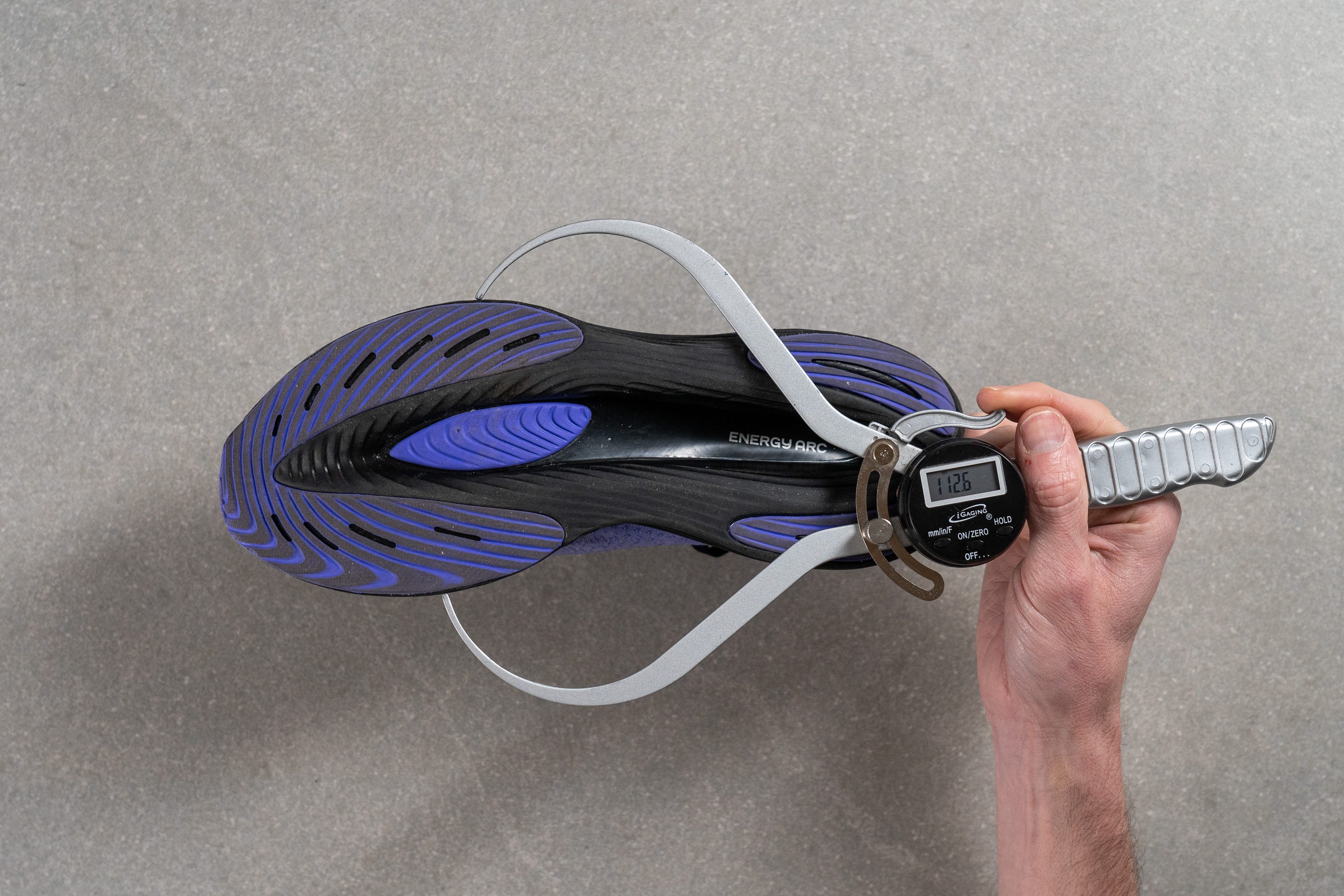
| FuelCell SuperComp Elite v3 | 112.6 mm |
| Average | 114.4 mm |
Midsole width - heel
The heel enjoys decent width, with our measurements showing 91.7 mm, a likely necessary adjustment given the plush FuelCell foam used.

| FuelCell SuperComp Elite v3 | 91.7 mm |
| Average | 90.7 mm |
Durability
Toebox durability
After the shoe scored top marks in the breathability test, we didn't set our hopes too high for its performance in the durability test, where we put the upper to the test against the abrasive spin of our Dremel tool.
Our scepticism was justified. Leveraging our extensive experience from lab testing hundreds of shoes, we've honed our ability to spot a fragile upper—and unfortunately, this was one of those cases.
The Elite v3's upper barely withstood the Dremel challenge, earning a disappointing 1/5 in our assessment.
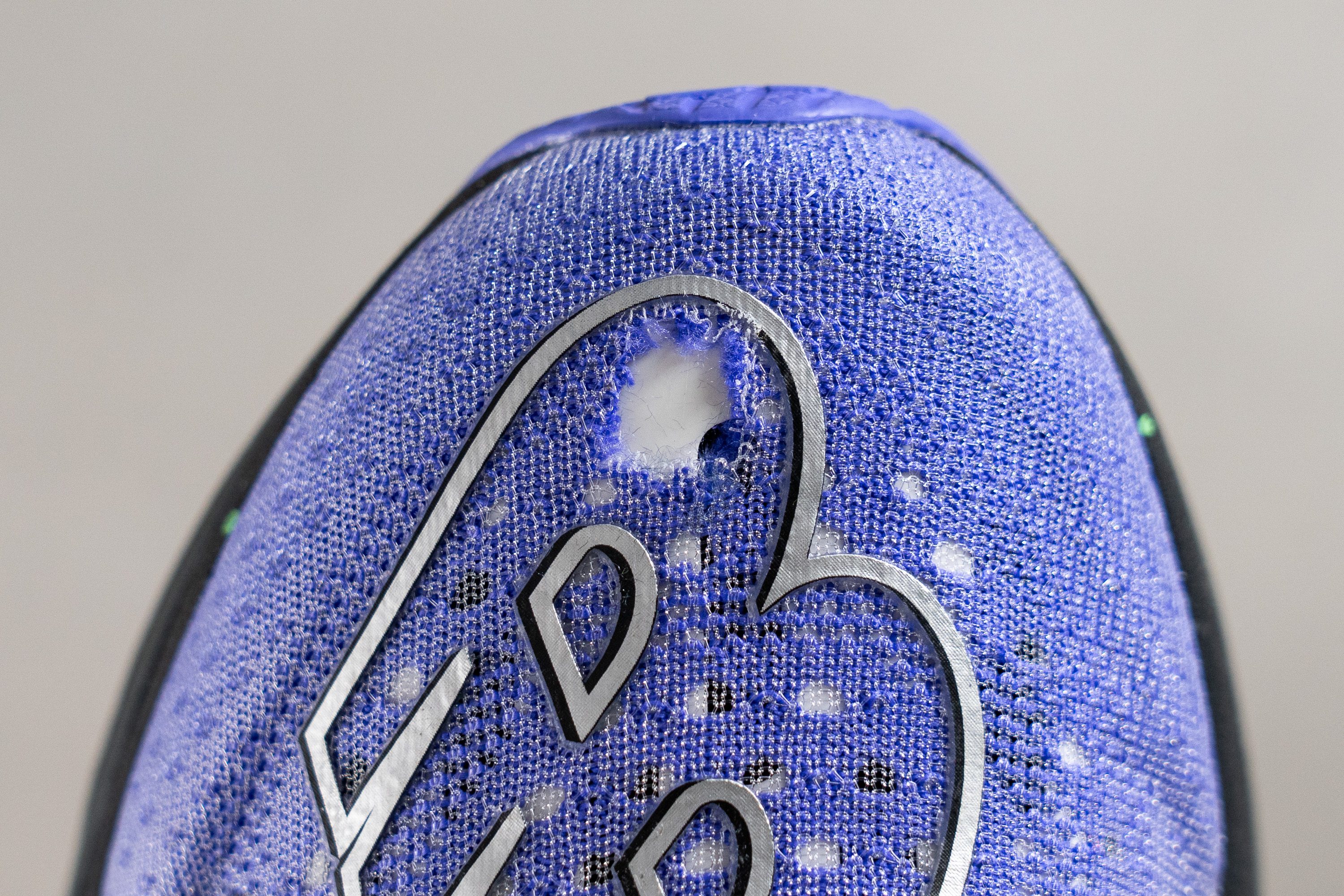
| FuelCell SuperComp Elite v3 | 1 |
| Average | 2.6 |
Heel padding durability
We then shifted our focus to the heel, a section that often raises concerns more than the toebox. While the toebox test might only be relevant for a select group of runners—typically those who tend to point their big toe upwards while running—the heel endures wear from nearly everyone.
To our delight, the Elite v3 truly excelled in this area. Employing the Dremel under the same conditions as we did for the toebox (3.2N @ 5K RPM), the heel withstood the challenge admirably, securing a perfect score of 5/5.
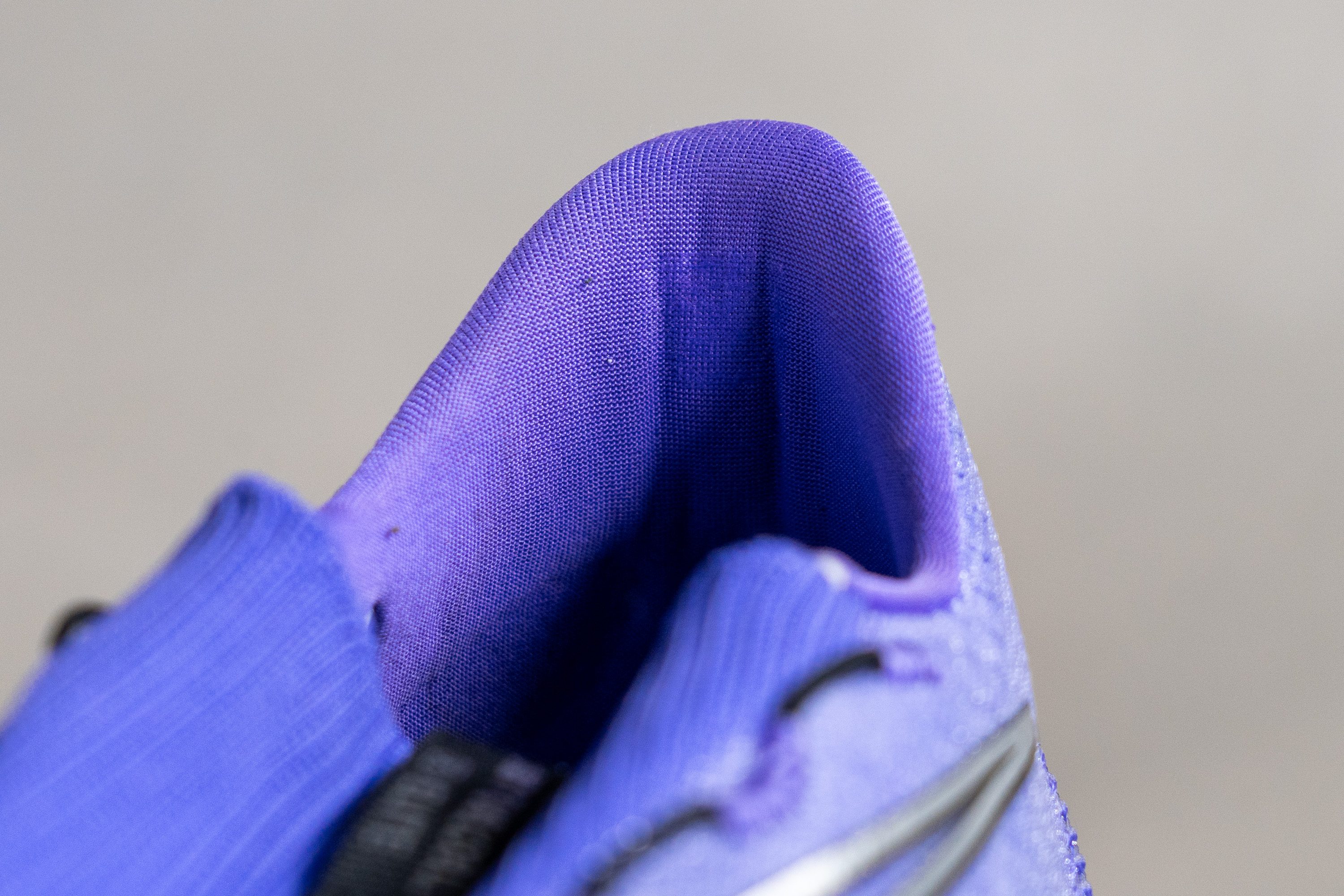
| FuelCell SuperComp Elite v3 | 5 |
| Average | 3.4 |
Outsole hardness
Then, we moved our focus to the outsole, hoping it would mirror the heel's performance.
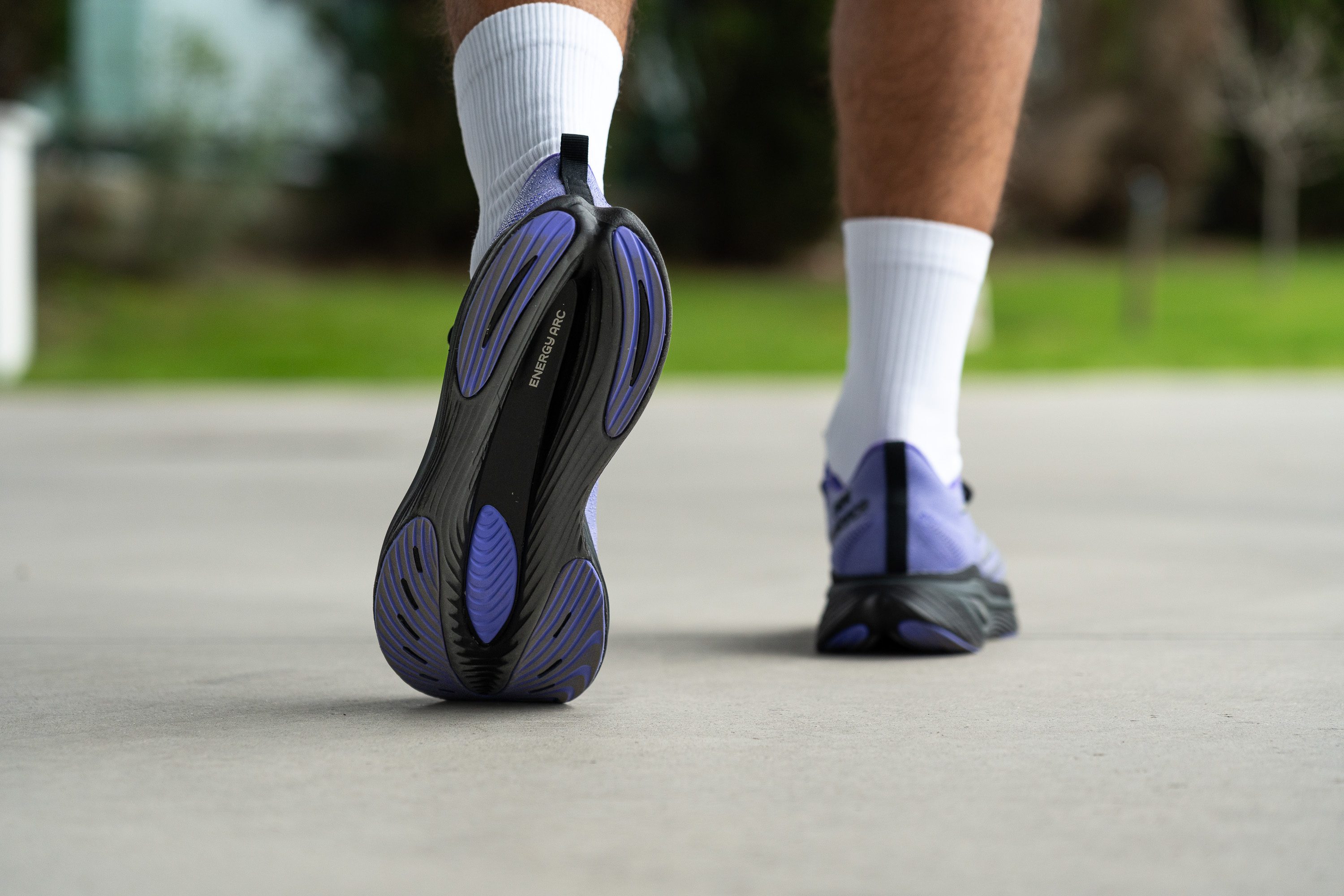
In our initial test, we measured the hardness at 74.5 HC in our lab—a score that sits comfortably in the middle, leaning towards a slightly softer composition to enhance grip. From our tests, we can confirm that this balance contributes positively to the shoe's traction.

| FuelCell SuperComp Elite v3 | 74.5 HC |
| Average | 79.2 HC |
Outsole durability
Yet another Dremel test on the outsole helped us gauge its durability.
We observed a mere 0.9-mm indentation in the rubber, a result that might seem average at first glance. However, considering the soft nature of the rubber used here, we see this as a commendable outcome.

| FuelCell SuperComp Elite v3 | 0.9 mm |
| Average | 1.1 mm |
Outsole thickness
In our analysis, we discovered that the outsole of the shoe has 3.2 mm of rubber. While this thickness is a good choice for a training shoe, it feels excessively bulky for a competition shoe, particularly given its strong performance in our durability assessments.
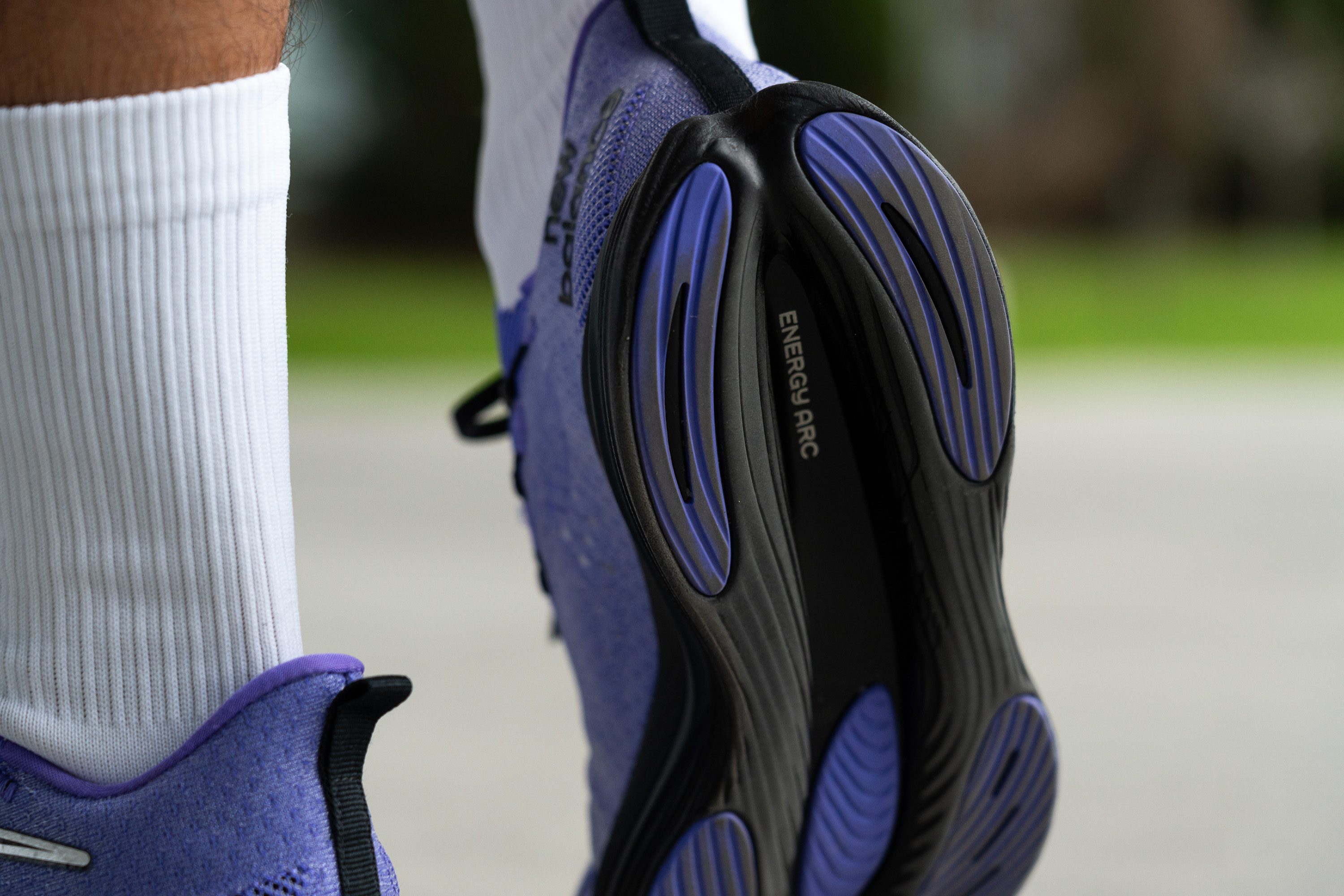
From our standpoint, New Balance could have streamlined the design by opting for a thinner layer of rubber, perhaps between 1.5 to 2 mm. This adjustment would still ensure ample longevity while significantly reducing the shoe's weight, potentially making it far more competitive in the racing category.

| FuelCell SuperComp Elite v3 | 3.2 mm |
| Average | 3.2 mm |
Misc
Insole thickness
The SC Elite v3 features an exceptionally slim insole, measuring merely 2.1 mm, strategically designed to maximise the foam while adhering to World Athletics' regulations.

| FuelCell SuperComp Elite v3 | 2.1 mm |
| Average | 4.5 mm |
Removable insole
The insole is removable. Yet, we must caution you due to its ultra-slim design. Should you opt for an aftermarket insole or custom orthotics, ensure they're equally thin to prevent cramping the toebox.
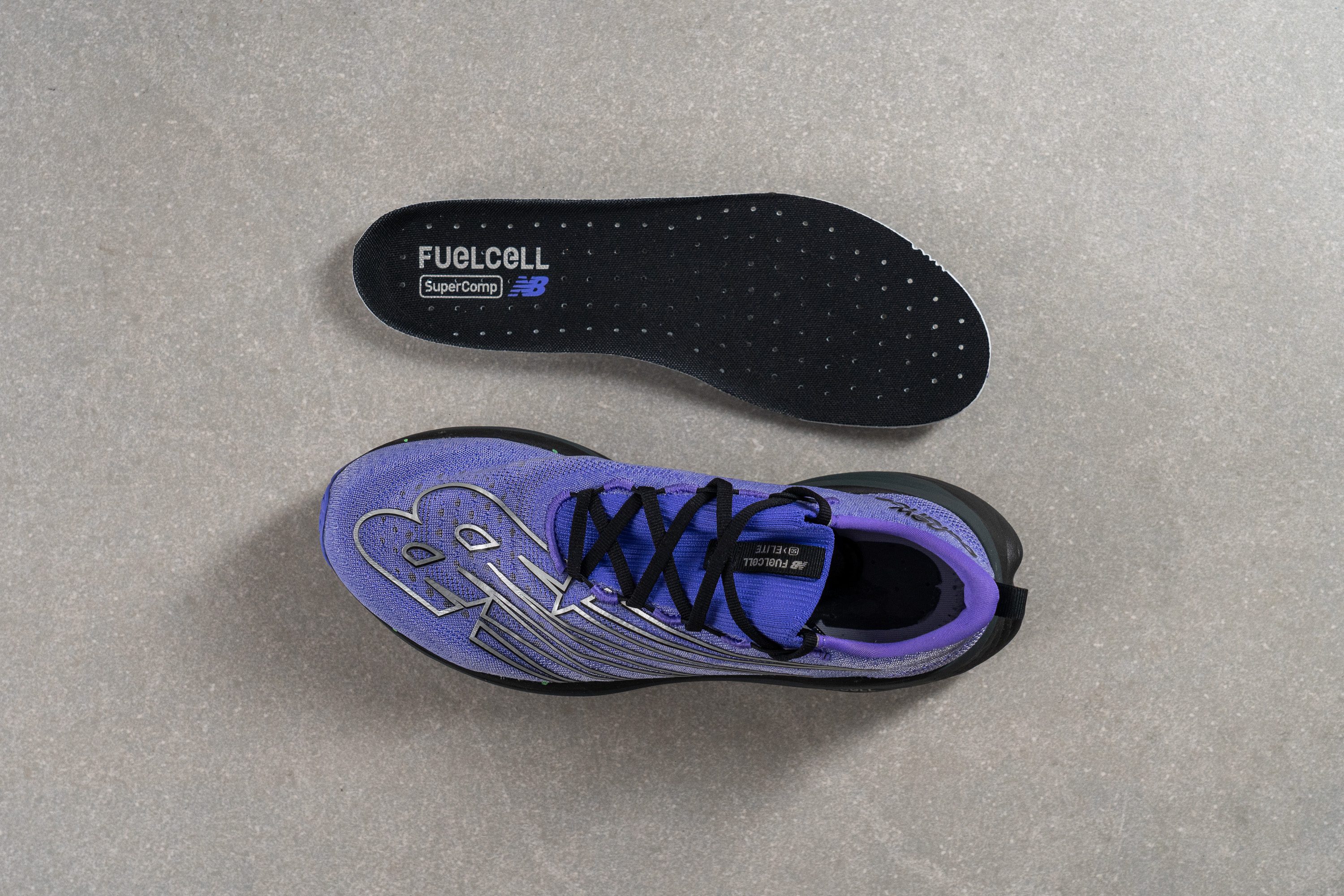
| FuelCell SuperComp Elite v3 | Yes |
Midsole softness in cold (%)
As we've previously mentioned, the FuelCell foam used by New Balance here isn't Pebax, leading to less impressive performance in colder conditions. It does become 22.3% firmer, which isn't necessarily poor, but given the steep £230 price point, it's frankly disappointing.
For that kind of investment, we expect a foam that maintain its performance regardless of temperature, something we've found lacking in the Elite v3.
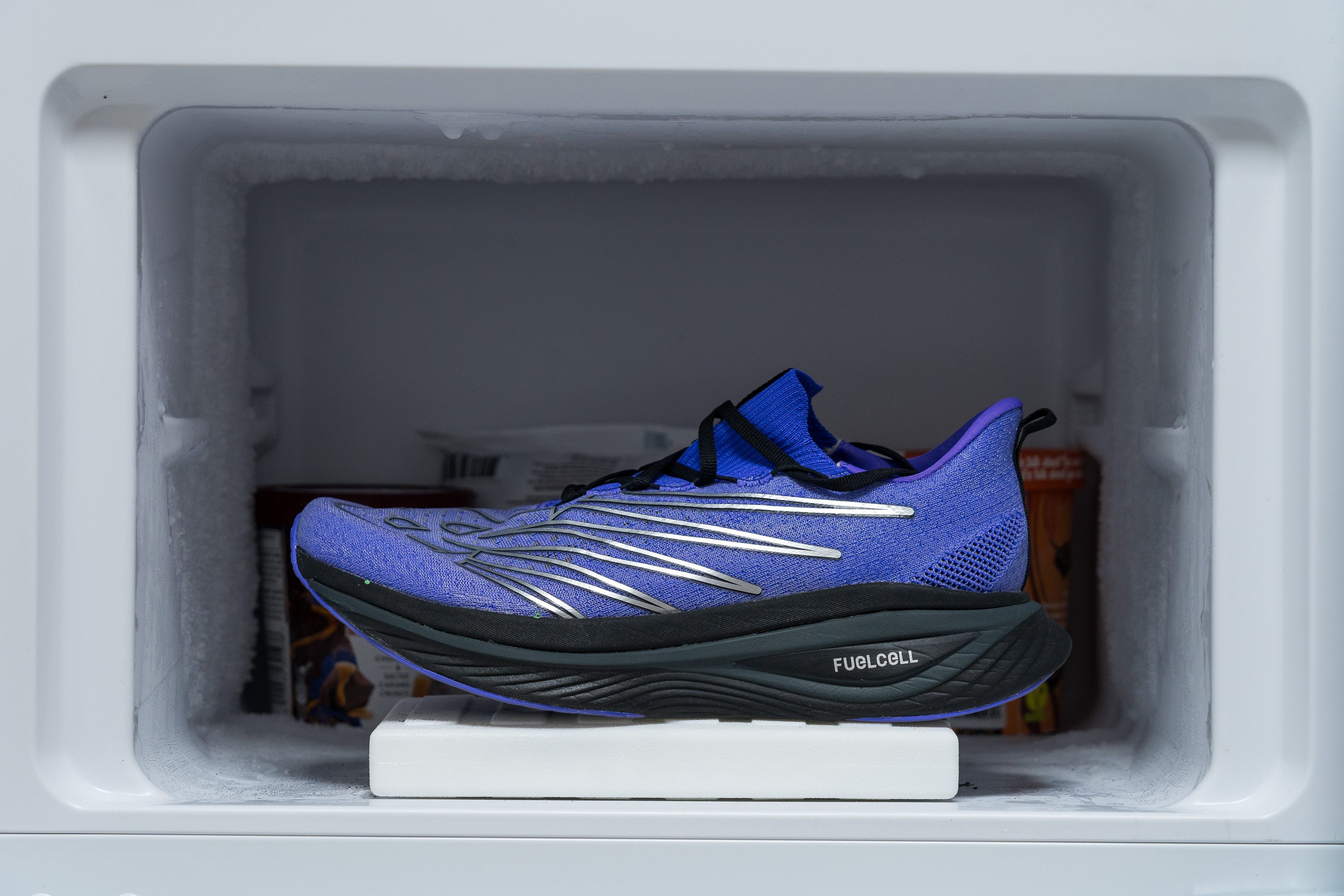
| FuelCell SuperComp Elite v3 | 22% |
| Average | 24% |
Reflective elements
Our expectations did not include spotting reflective features on the Elite v3, as these are often absent in shoes crafted for daylight marathons.

| FuelCell SuperComp Elite v3 | No |
Tongue padding
The tongue is crafted from knit, diverging from the mesh used in the rest of the upper, which creates a stretchy and comfortable feel. It's lightly cushioned, with a minimal thickness of just 1.4 mm.

When it comes to the tongue, we've been fortunate enough not to encounter any issues. However, we've observed other runners experiencing significant irritation in the ankle, some even to the point of bleeding in marathons. If you're prone to issues in this area, the tongue's design might pose a challenge for you.
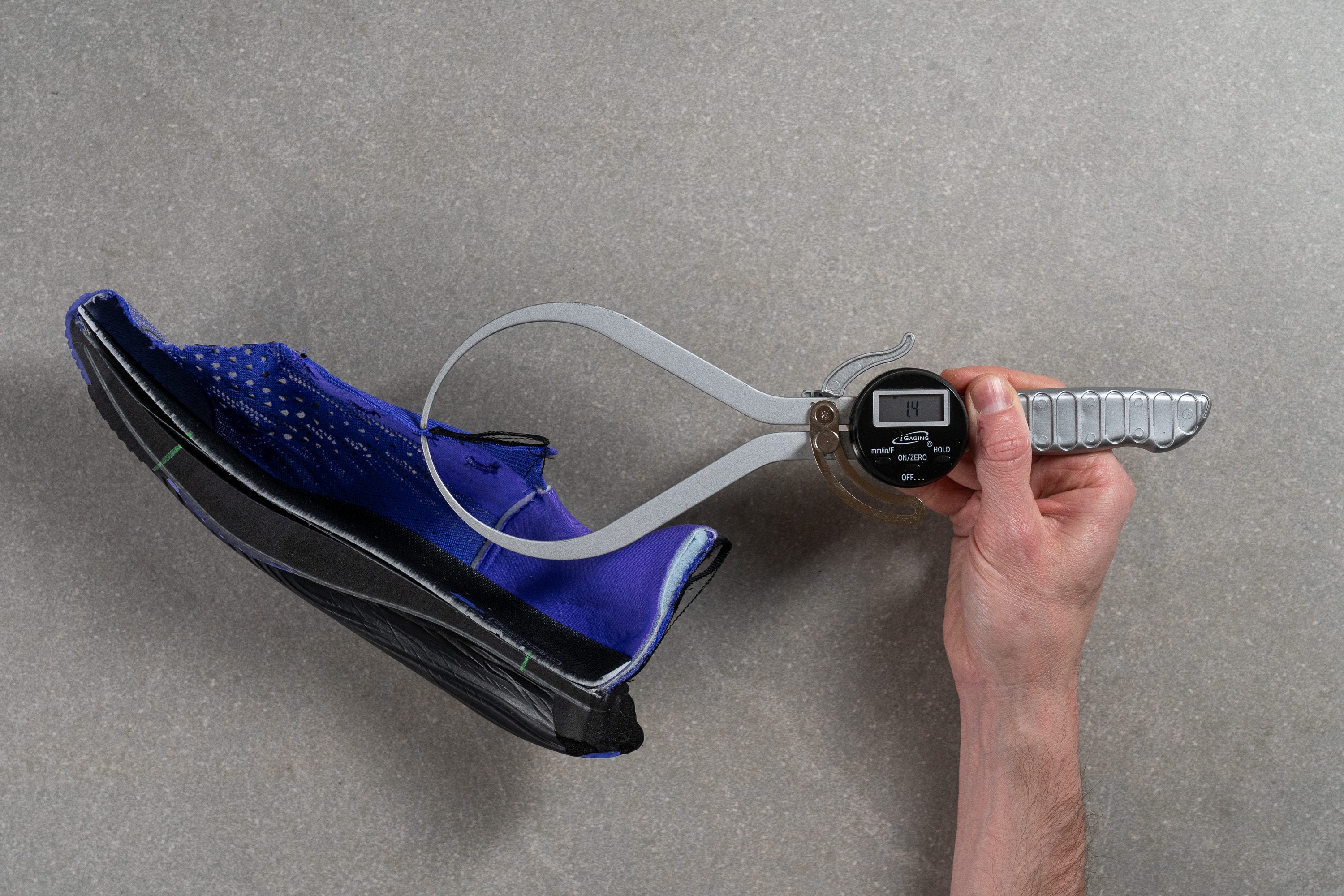
| FuelCell SuperComp Elite v3 | 1.4 mm |
| Average | 5.8 mm |
Tongue: gusset type
We discovered that the tongue is gusseted in a sock-like style, providing a robust lockdown. However, this design also makes the Elite v3 one of the most challenging shoes to slip your feet into.
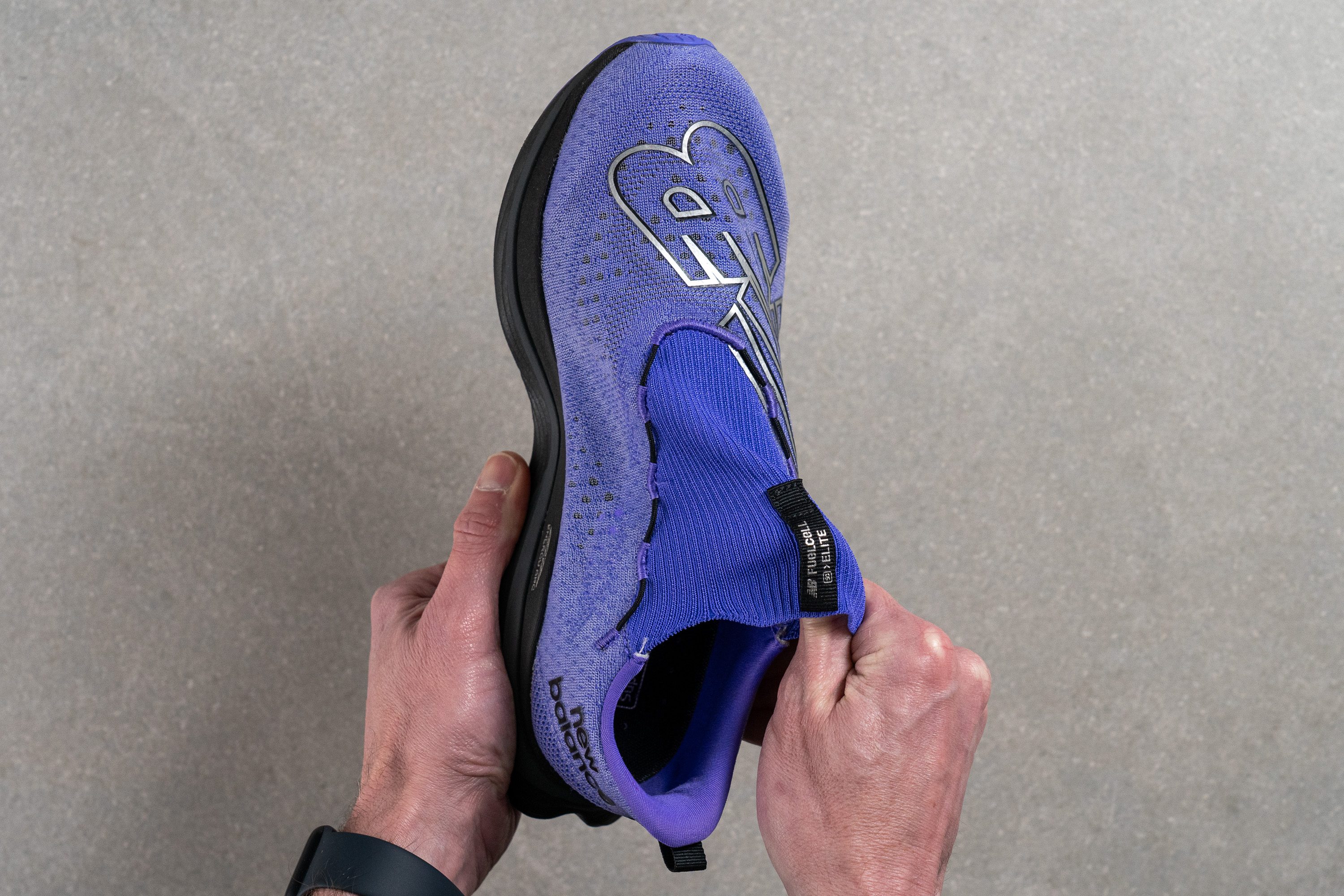
| FuelCell SuperComp Elite v3 | Sock like |
Heel tab
New Balance has incorporated a finger-loop heel tab into the Elite v3, a feature that proves essential for slipping your feet into the shoe. Without this tab, getting the shoe on would be quite a hassle.
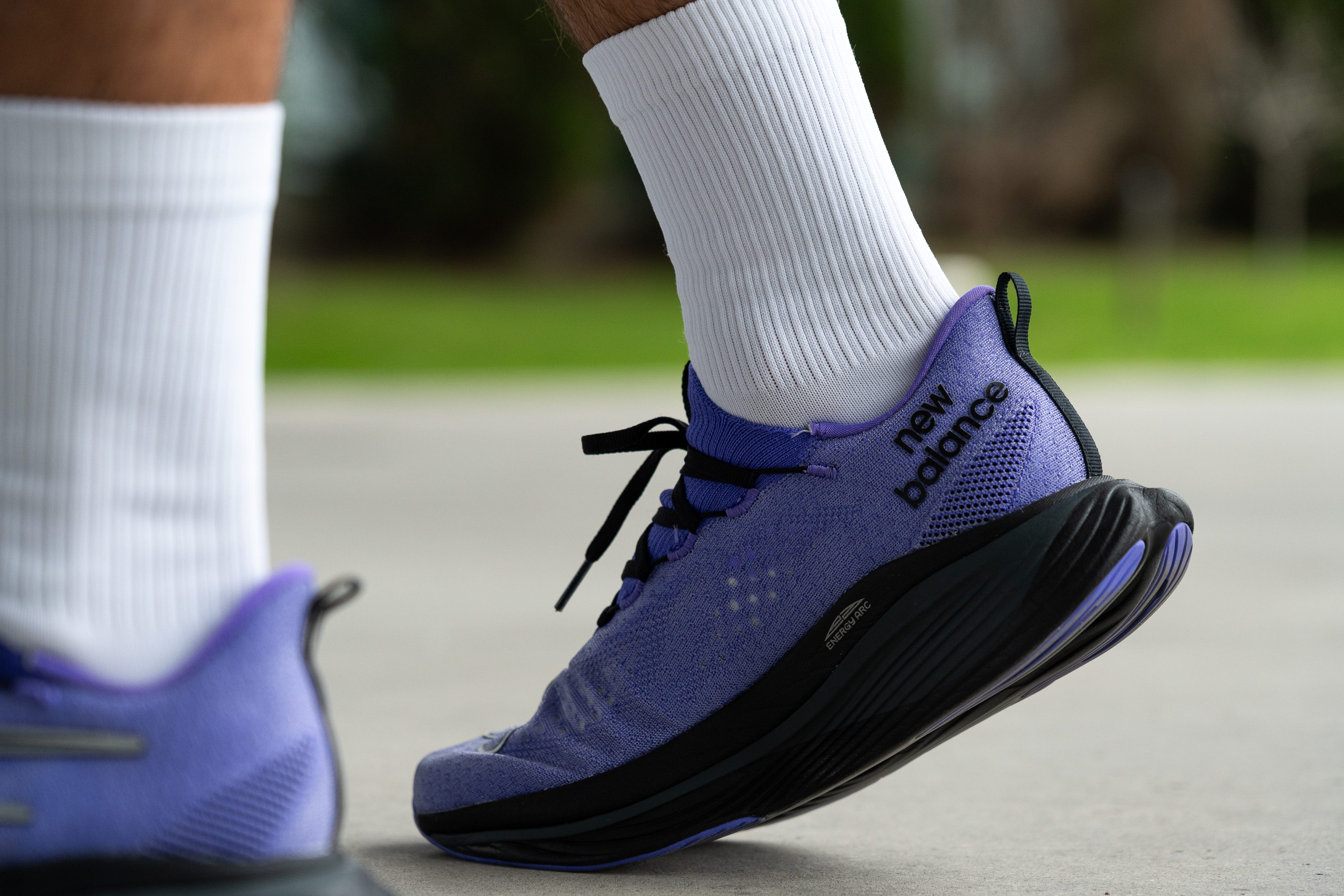
| FuelCell SuperComp Elite v3 | Finger loop |

